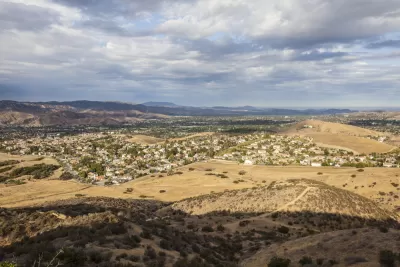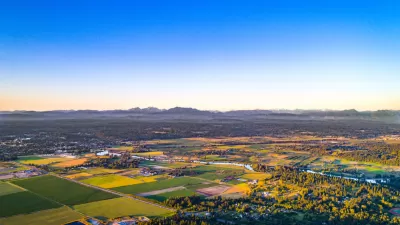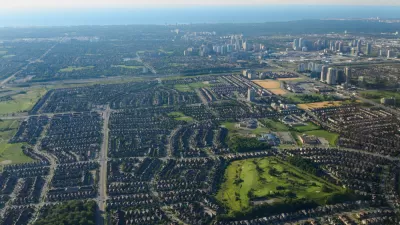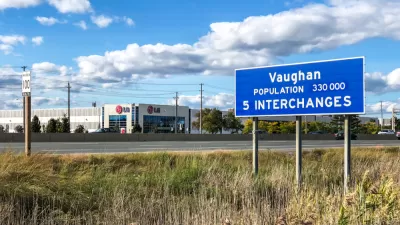Some commentators on urban containment treat the issue as all-or-nothing: either strict limits on suburban development are good public policy everywhere, or they are good public policy nowhere. Perhaps a more nuanced view is appropriate.

I recently read a blog post crediting me with recognizing the evils of urban containment—by which I mean, land use policies (such as urban growth boundaries) that limit exurban real estate development. Since I'd been writing about very different issues over the past few years, I asked myself: what is my position on urban containment, anyhow?
Fifteen years ago, I would have considered growth boundaries a pretty good thing, because my work was focused on the evils of suburban sprawl, and I had never experienced out-of-control housing prices. But as the latter problem has spread beyond New York and San Francisco, I have become a little more sensitive to the best argument against urban containment: that it limits housing supply and thus raises housing prices. So it seems to me that this issue involves a conflict between two worthy values: affordable housing and limiting the negative effects of suburbanization. If you are a doctrinaire libertarian or environmentalist, the conflict is easy to resolve: one value comes first, and the other value goes in the trash can.
But for the rest of us, it seems to me that the right level of urban containment (if any) may be different for different regions, depending on a variety of factors:
- Are the city and its older suburbs declining? If so, containment might prevent a wildfire of blight that infects suburb after suburb, making the region as a whole less desirable. From this perspective, urban containment in some form might be most desirable in stagnant Rust Belt regions with declining cities, such as Cleveland or Detroit.
- How high are housing costs? Obviously, containing housing costs is more important where housing costs are already high—for example, New York or San Francisco. On the other hand, in regions where some houses are so cheap that making them habitable is not worth the trouble, reducing housing costs is perhaps a lower priority.
- If regional housing costs are high (or at least not so low that houses are selling for the price of a video recorder) how willing is the city to change its zoning codes to accommodate new housing? If new housing doesn't go in the newer suburbs, it has to go somewhere. And if government doesn't let it go somewhere, obviously a housing shortage results.
- Is a region's physical climate temperate enough that its residents generate relatively low levels of greenhouse gases no matter where they live? For example, in a region where temperatures never go below freezing or above 90 degrees Fahrenheit, heating and cooling bills will be lower than in icy Minnesota or sweltering Houston. So it seems to me that if we are interested in limiting climate change, we should encourage settlement in these temperate regions even if it means more exurban housing in those regions. In other words, climate change is another reason why urban containment in coastal California is not a good idea.
In sum, aggressive containment policies such as growth boundaries seem least appropriate for temperate, growing, expensive regions such as coastal California. On the other hand, I am less willing to condemn such policies for small, stagnant regions.

Pennsylvania Mall Conversion Bill Passes House
If passed, the bill would promote the adaptive reuse of defunct commercial buildings.

World's Largest Wildlife Overpass In the Works in Los Angeles County
Caltrans will soon close half of the 101 Freeway in order to continue construction of the Wallis Annenberg Wildlife Crossing near Agoura Hills in Los Angeles County.

U.S. Supreme Court: California's Impact Fees May Violate Takings Clause
A California property owner took El Dorado County to state court after paying a traffic impact fee he felt was exorbitant. He lost in trial court, appellate court, and the California Supreme Court denied review. Then the U.S. Supreme Court acted.

California Grid Runs on 100% Renewable Energy for Over 9 Hours
The state’s energy grid was entirely powered by clean energy for some portion of the day on 37 out of the last 45 days.

New Forecasting Tool Aims to Reduce Heat-Related Deaths
Two federal agencies launched a new, easy-to-use, color-coded heat warning system that combines meteorological and medical risk factors.

AI Traffic Management Comes to Dallas-Fort Worth
Several Texas cities are using an AI-powered platform called NoTraffic to help manage traffic signals to increase safety and improve traffic flow.
City of Costa Mesa
Licking County
Barrett Planning Group LLC
HUD's Office of Policy Development and Research
Mpact Transit + Community
HUD's Office of Policy Development and Research
Tufts University, Department of Urban and Environmental Policy & Planning
City of Universal City TX
ULI Northwest Arkansas
Write for Planetizen
Urban Design for Planners 1: Software Tools
This six-course series explores essential urban design concepts using open source software and equips planners with the tools they need to participate fully in the urban design process.
Planning for Universal Design
Learn the tools for implementing Universal Design in planning regulations.



























